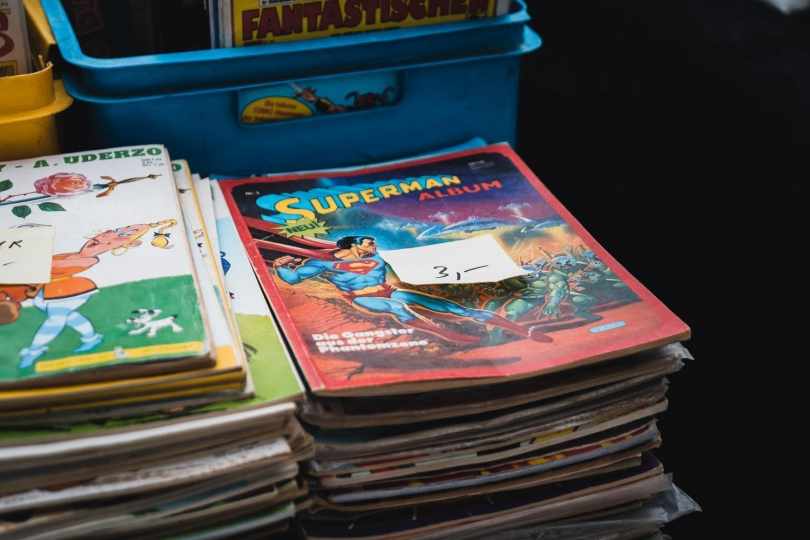Unlike a typical book or even a short blog post, comics represent a complex mixture of culture, logic, cryptic meaning, and colloquial language, which means that getting one?s point across is the most important aspect. You are dealing with a simple phrase that is always associated with a corresponding picture and a situation. Still, translation of comics becomes quite demanding as the translator must keep things short as well and fit within a specified caption?s length. For example, if we are translating Japanese Manga, it will often include purely Japanese aspects in terms of daily life and politics since it is the part of the local culture that is quite cryptic. It means that when you translate comics , you will always require a complete understanding of the original context, literally to the letter.
- Understand The Concept of The Comic Strip. The most important is to know what the main purpose of each picture is. It is not enough to translate the bits of text because you have to work like an explainer who helps the audience see the text purely as the addition but not as the primary point. It is especially relevant in Japanese comics where the picture and the mental movement from caption to caption matter way more than text, which only briefly supports the storyline. Still, it makes it even more challenging to translate comics because one should keep the audience interested by making it clear who says what and why.?
- Consider The Degree of Translation. What it basically means is the depth of interpretation. As a rule, the majority of comics that are meant for the older audience will include specific metaphors, allegories, and social aspects reflecting political, religious, and relevant social issues. It will make it relatively challenging to translate things directly. Therefore, most professional translators will seek a healthy balance between the original structure and the foreign version. Let us not forget that the length of words and phrases will always differ and may take more space, which is why it is necessary to stay in the middle by keeping things visually appealing.?
- Have Your Translation Checked by The Native. Of course, every translation of a comic strip must be checked by a native speaker, which means that even if you have a certified specialist to do the translation, it is still necessary to turn to at least one more person who will check the translation. You can look translation companies here and consider various options as you aim to get an expert?s opinion in terms of accuracy and logic. The most important is to ensure that the original meaning has not been distorted or changed to represent something new.?
- Consider Various Cultural Aspects. Comics belong to the most ?cultural? aspect of visual expression where the text and pictures are cleverly combined to send a precise message. Starting out as the political agenda, the art of comic books has captured the local cultures and traditions worldwide. This fact makes it so appealing to both young and old. Even if you are dealing with Donald Duck, you will see that professional translators have changed certain aspects. They considered the local culture or even added more pictures to let Kalle Anka (Swedish version) participate in the Swedish holiday celebration. While it is not always the case, translation of comics will often include such adjustments.?
- Balance Between Graphics And Text. Another aspect of translation that is related to comics is finding the right balance between text and graphics. The trick is to include enough text to explain the picture. While there may be a dialogue that has an intermediate complexity, the translator should consider the importance of each line for the capture. Sometimes it may be necessary to combine additional text at the bottom of the picture to explain a part of the dialogue or the events taking place. This way a translator can add more text (even if it is not present in the original version!) without making the picture look awkward in the upper caption.??
- Proofread And Edit Things Twice. The most challenging part is getting things checked as you complete the translation of the comics. The secret trick is to proofread each page at least once before you start with the final editing. The text must be logical and have the same style to keep things dynamic and inspiring. Ask at least two people (native speakers) to proofread the translation. Alternatively, the comics are checked by having one person read the strips aloud while letting the native speaker analyze the translated version. While it takes time and requires even more attention, it always pays off.?
Direct Translation Versus Total Adjustment?
It is one thing when we are translating the world-famous comics dealing with Spiderman or the Donald Duck. Yet, things become quite different when one has to work with the purely local comics understood only by certain country’s locals. Taking the popular Dutch comic newspaper strip called Sigmund, as an example, will require additional skills and knowledge of the local Dutch life since many things described in captions will not make much sense to the foreigners. There are two options one can consider: either to translate things directly, which is not always the best option or create a special version by adjusting things to the country?s culture and specifics. In a certain sense, it often means creating something new, which may appear beneficial since the readers will be able to relate. It is especially important if we are turning to the younger audience where the text may include specific expressions to let the young readers discover new words.?
If you are a comic book enthusiast, you can check out Back To The Past Collectibles for vintage comics,?back issues comics, and other collectibles.

